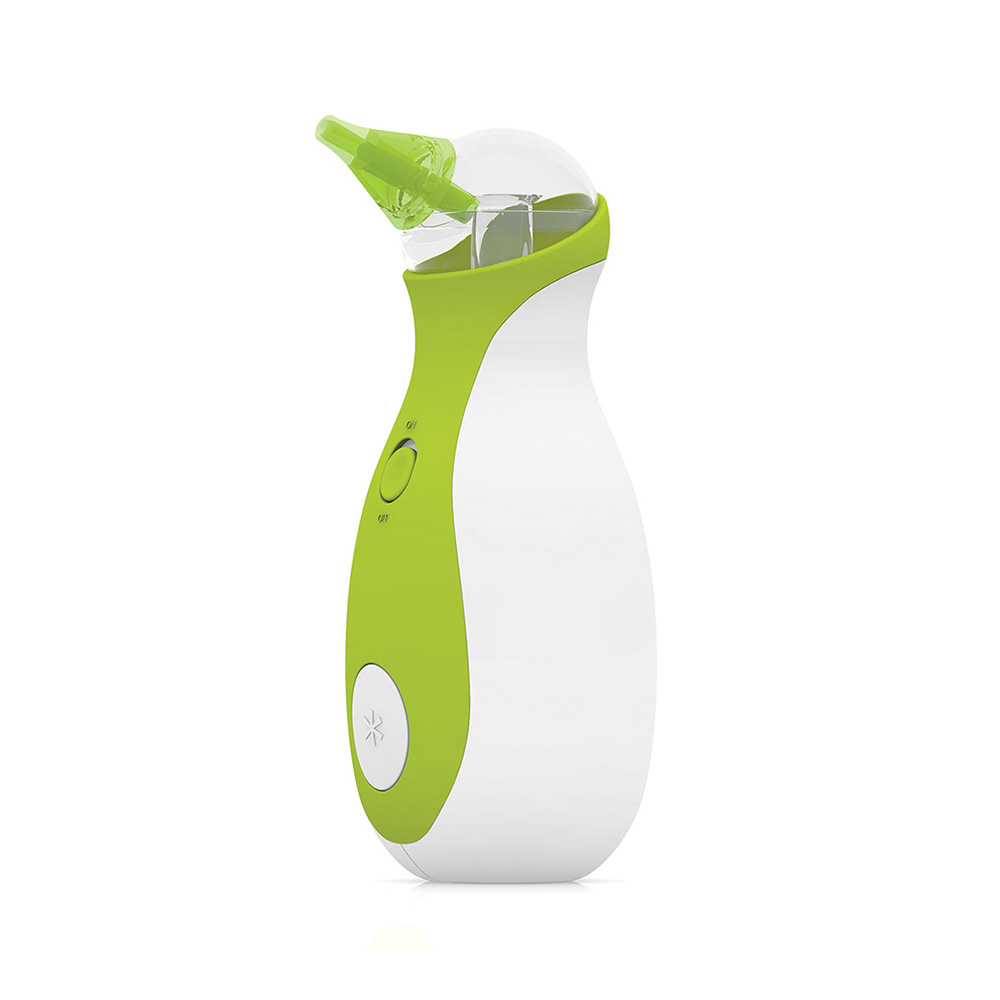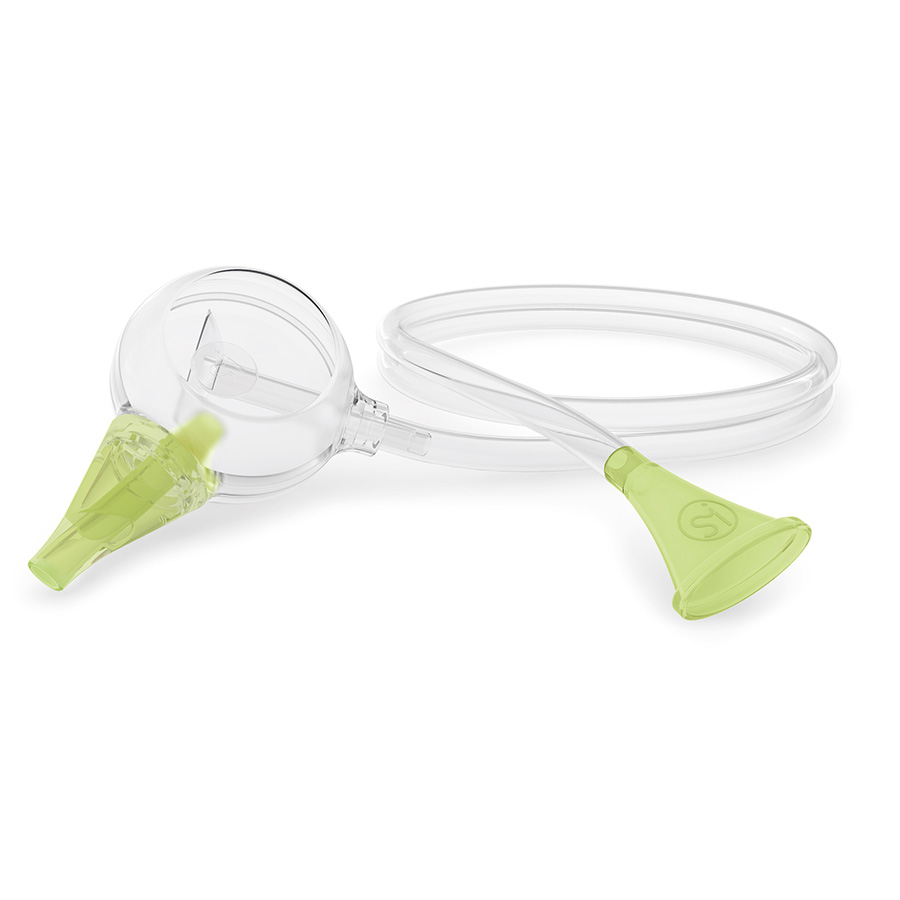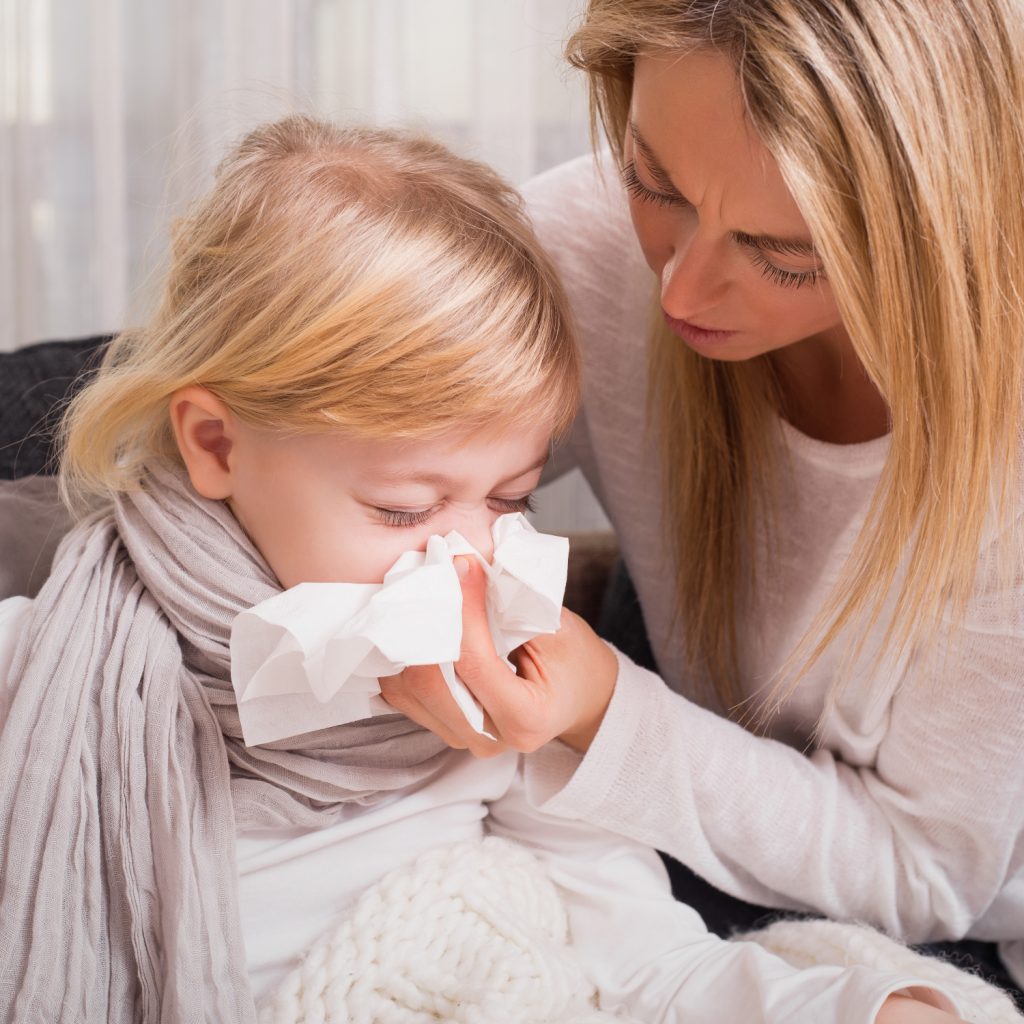
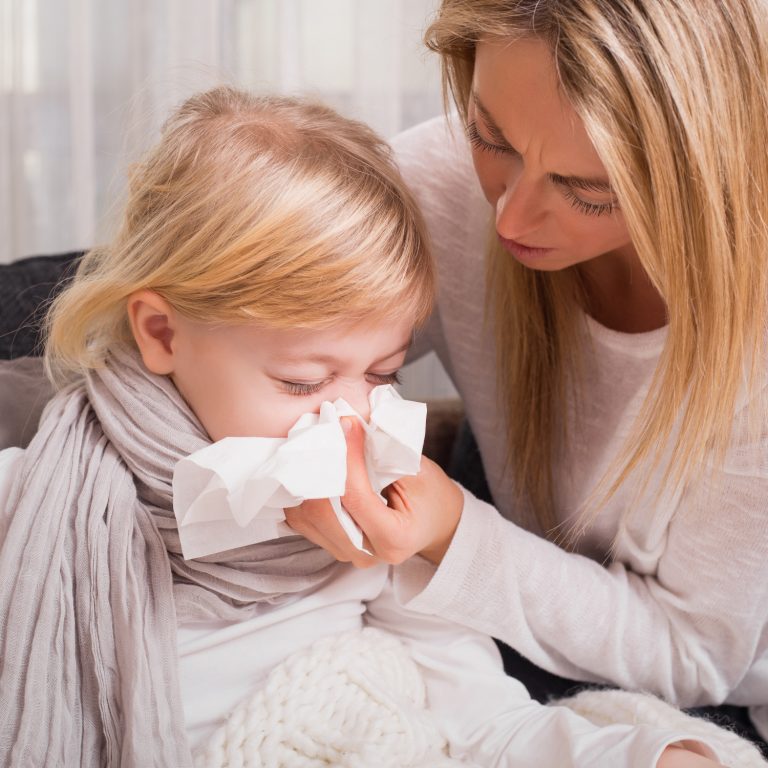
Runny or stuffy nose in children. What to do?
Just stay calm! We’re here to help you. A stuffy or runny nose is a struggle for the child, and as a result, for the whole family, but it should not be dangerous if you know how to treat it properly. In this article, you will learn what causes a runny/stuffy nose in a baby or infant, and how to relieve the symptoms.
Why does a runny/stuffy nose occur?
A runny or blocked nose is caused typically by:
- viruses, or
- allergens.
Young children are prone to infections due to their developing immune systems – they are not ready yet to fight all the viruses that are spread in the air. Babies, toddlers, and preschoolers can catch a cold even 6-10 times a year! A runny or stuffy nose can be a sign of a cold. In fact, the excess mucus produced during infection is not our enemy – this way the body washes out the germs from the nose.

A runny nose can also be an allergic reaction in babies and infants. The symptoms can appear already in early childhood. Typical allergens include pollens, house dust mites, moulds, or cat and dog hair. They are treated as germs by the child’s body, which results in the production of excess mucus.
Many parents claim to see a correlation between a baby’s runny nose and teething, which might be caused by inflammation around the emerging tooth; however, there is no clear confirmation of it in scientific research.

Why is it a problem?
A runny/stuffy nose is not only irritating for the child and the parents but can cause serious medical consequences as well.
A stuffy nose is especially problematic for the baby at night when they cannot take a full breath and sleep well due to a lot of mucus stagnating in the nasal passages and sinuses.
When a newborn has a cold, it’s getting even more serious as they breathe mainly through their nose until they are at least 2 months old! When the baby has nasal congestion, they also cannot eat properly. They cry as it’s the only way for them to get enough air.
But the problem doesn’t disappear with age. Runny nose or nasal congestion in infants and older children is a common problem. When a child enters daycare and kindergarten, they bring home not only funny stories but also invisible unwanted guests – infectious diseases. Being exposed to people is a necessary and inevitable stage in a child’s life, but also associated with catching various types of infections, unknown to their body so far.
What are the consequences?
A long-lasting, untreated nasal congestion in babies and infants can lead to serious consequences such as bronchitis, sinus or middle ear infection, as well as sleep disturbances. When the disease becomes severe and chronic, medications (including antibiotics) often cannot be avoided anymore! You need to remember that there are a lot of risk factors that predispose children to develop an adverse reaction to a medicine. Prevention is always better than cure!
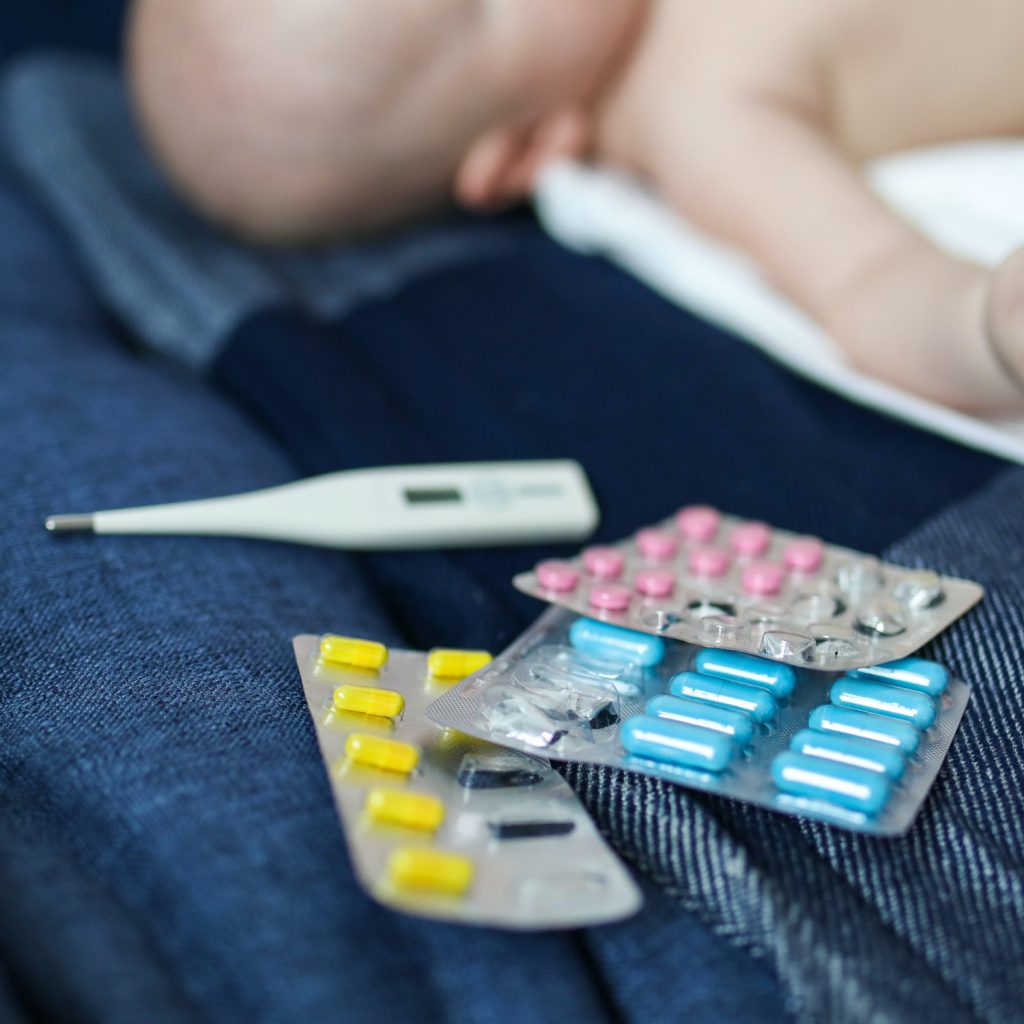
How to help a baby with a runny/stuffy nose?
Until your child learns how to blow their nose, you can relieve the symptoms of a runny and stuffy nose and facilitate breathing by clearing the nasal passages with the help of saline solution and an electric or manual nasal aspirator. It’s easy and safe to perform at home.
When you clear the stuffy nose of a baby or infant, you not only ease their discomfort and may prevent illnesses of the upper airway, but you also help to reduce the use of medications and ensure a quiet night for the child and yourself. Choosing a night light with a timer for your child’s bedroom can further enhance those quiet nights by creating a soothing and predictable sleep environment. A timer ensures that the light fades gently as your child falls asleep, helping them transition smoothly into rest. It also prevents the light from staying on unnecessarily, preserving the calm, dark setting that supports deep, uninterrupted sleep. Read more about it on our blog!
Sounds good, doesn’t it? The remedy for the baby’s runny or stuffy nose is:
- using saline solution to flush out the nose and to thin the secretion,
- suctioning the nose with a nasal aspirator to get rid of the mucus accumulated in deeper cavities.
Saline solutions can be bought in a pharmacy or be made at home. It’s safe to use even on a newborn as it doesn’t contain any medications. Do not use any other type of pharmaceutical nasal drops unless prescribed by the doctor!
The next step is to clean the little nose with the help of a baby nasal aspirator, for example from the Nosiboo line. They are suitable for newborns, infants, and even toddlers – as long, as your child needs them. If you’d like to know more about which type of nasal aspirator will suit you the most, click here.
How to use a nasal aspirator?
It’s easy, see it for yourself:
1. Hold your child in a stable position.
a. Clear the nose of newborns or infants after laying them into a stable position. It’s recommended to hold their head during the process.
b. If the child is already able to sit, place them in your lap. In this case, do not lay the child on their back during the aspiration.
Newborns
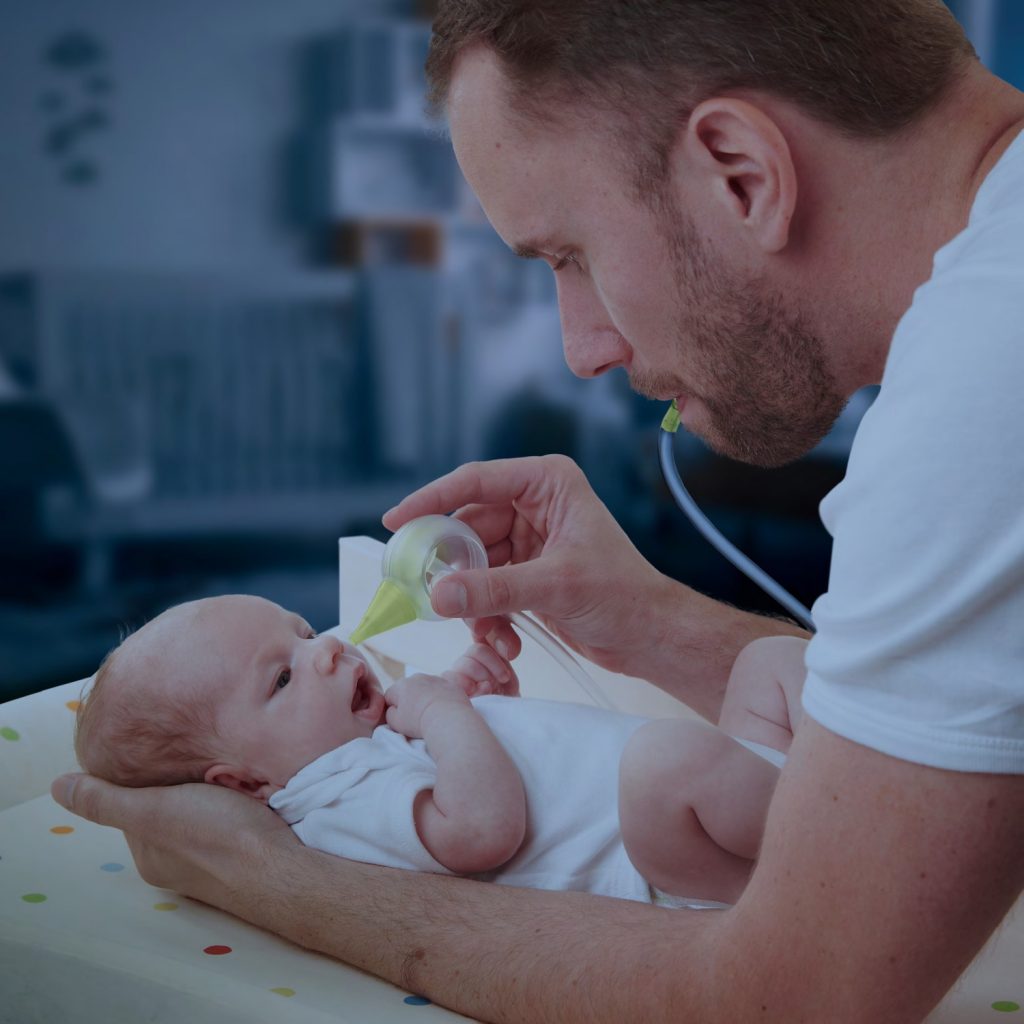
Infants
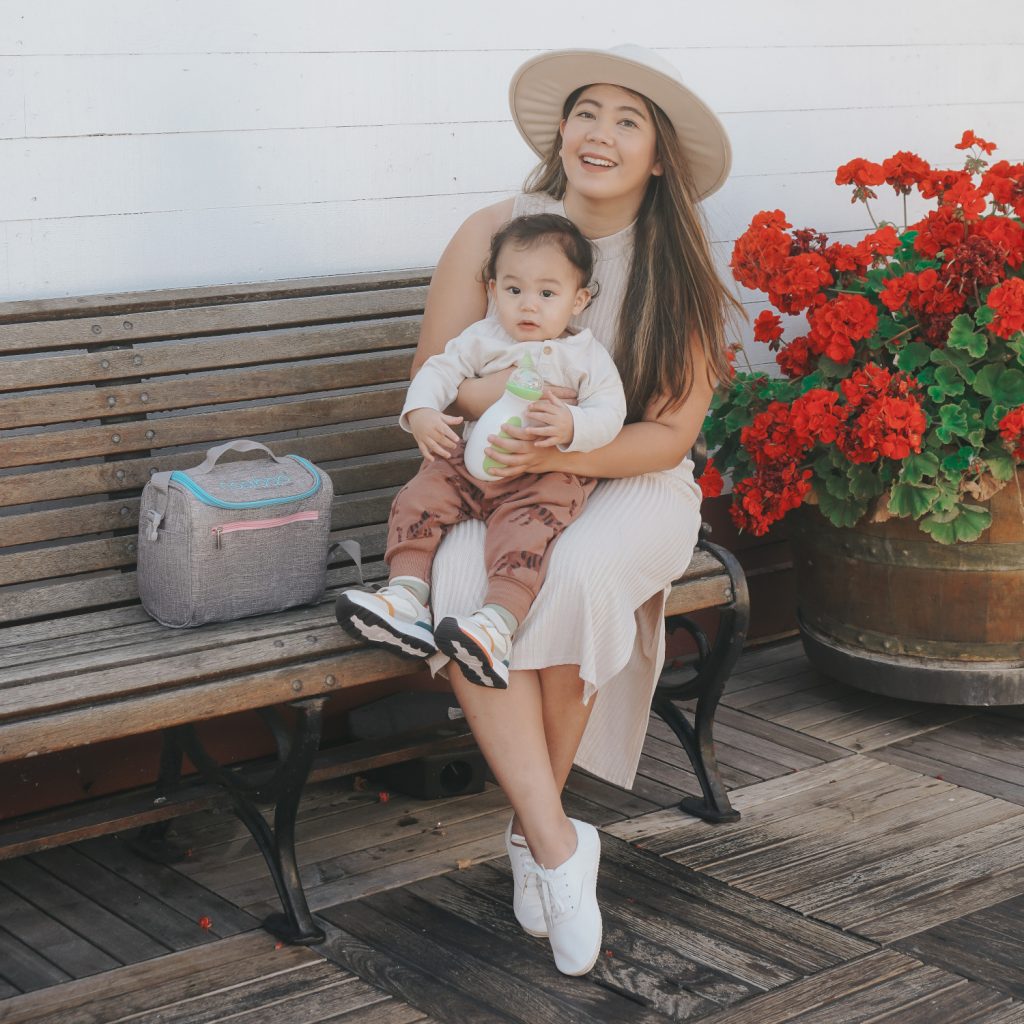
Toddlers
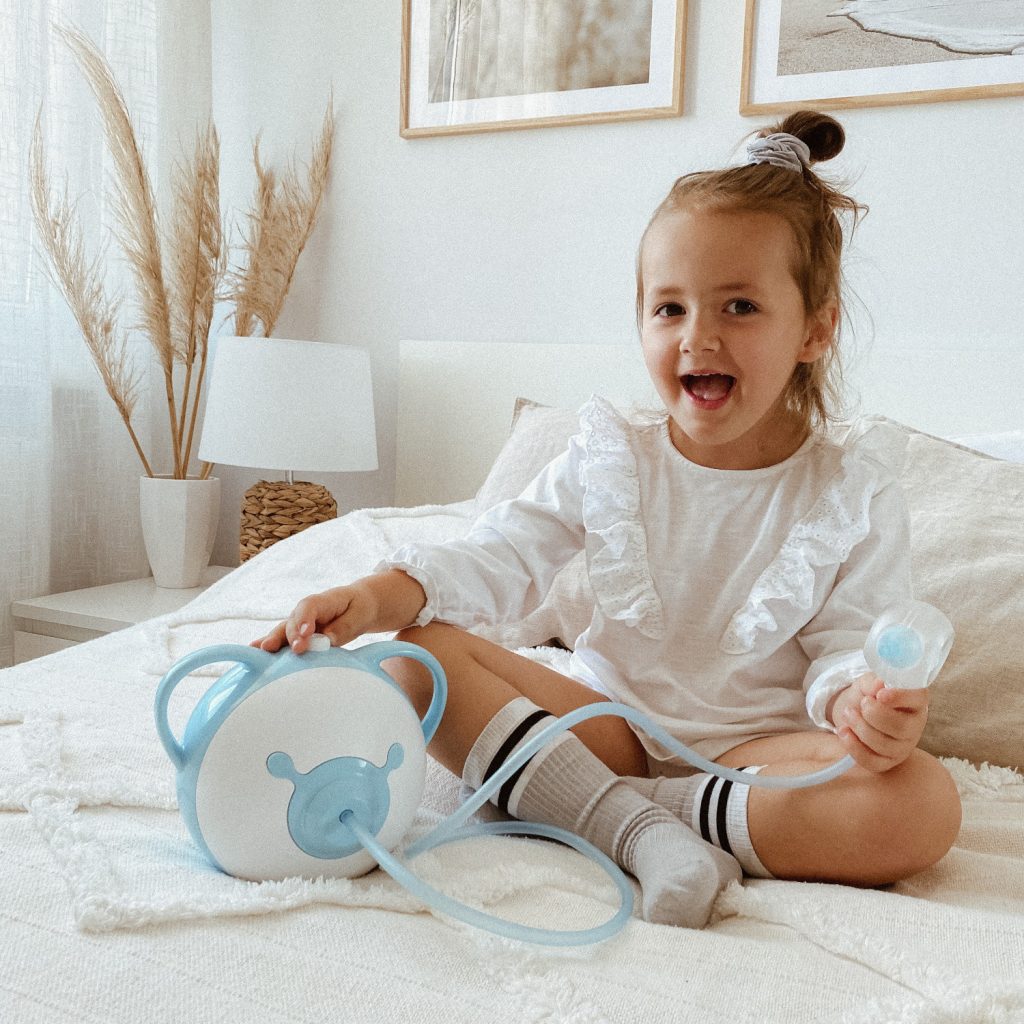
2. Insert the clean, dry nose tip into the child’s nostril. Depending on the type of nasal aspirator you use, turn it on or start performing suctioning using the power of your lungs. Move the nose tip around gently to make sure that you get all the areas of the nostril. It should take around 10 seconds per nostril to clear the stuffy nose.
3. Wash the parts intended to be disinfected with liquid soap and lukewarm water. You can soak the parts in a disinfection liquid, just make sure the liquid is safe to use for baby equipment.
4. Let the parts dry completely before the next use.
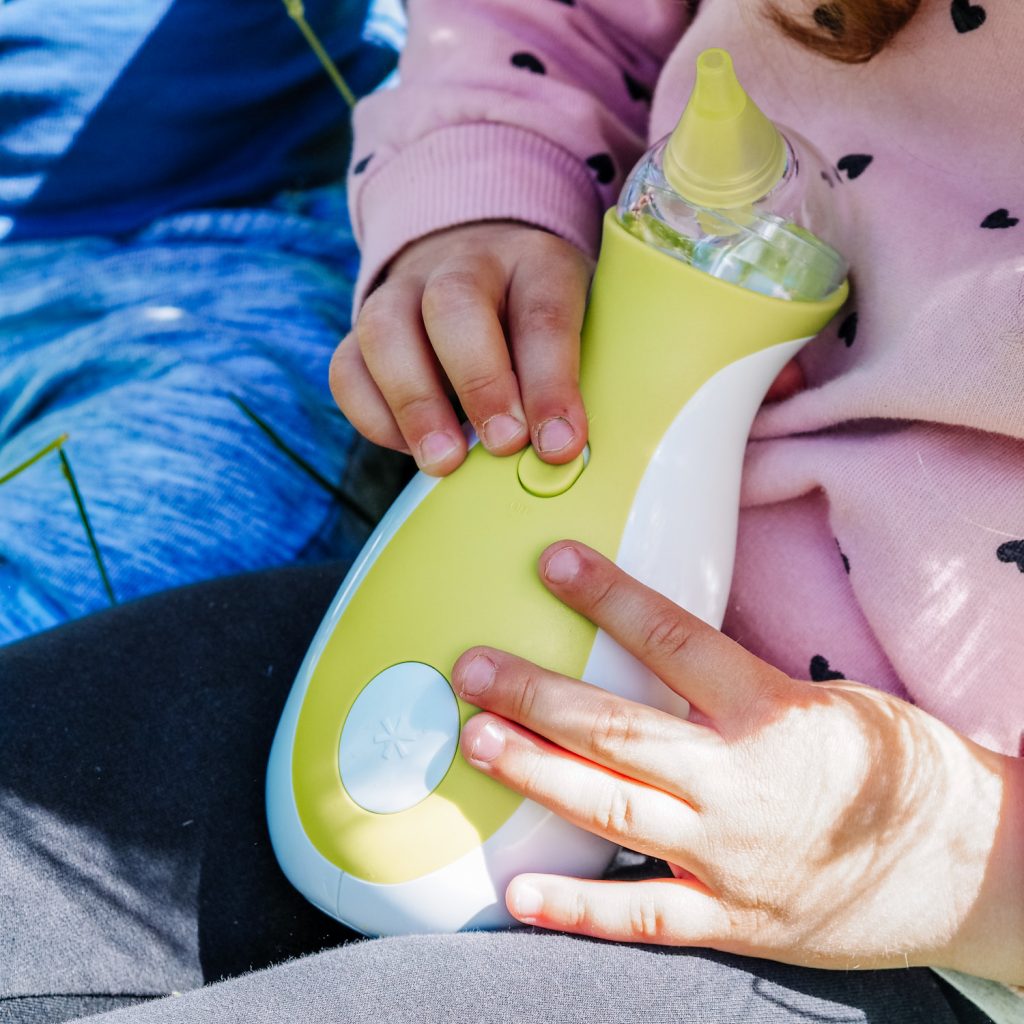
As you see, the process is quick and easy. If you’d like to become a real nasal hygiene expert, be sure to check out our guide for parents. With proper nasal aspiration, you can clear the runny or stuffy nose of a newborn or infant safely and efficiently, easing the child’s discomfort and helping to prevent serious illnesses of the upper airway. But, most importantly, your baby will be happy again!
Bibliography
Centers for Disease Control and Prevention. (2019). Runny Nose from a Cold & Antibiotics: Q & A Guide for Parents U.S. Department of Health and Human Services, https://www.cdc.gov/antibiotic-use/colds.html
Chirico, G., Quartarone G., and Mallefet P. (2014). Nasal congestion in infants and children: a literature review on efficacy and safety of non-pharmacological treatments. Minerva pediatrica,66.6 (2014): 549-557 https://www.ncbi.nlm.nih.gov/pubmed/25336097
Corey J. P., Houser S. M., Ng B. A. (2000). Nasal congestion: a review of its etiology, evaluation, and treatment. Ear Nose Throat J., Sep;79(9):690-3, 696, 698 passim. https://pubmed.ncbi.nlm.nih.gov/11011488/
Gellner C. (2018) Should I be worried if my child gets sick too often? [Interview transcript] Health University of Utah. https://healthcare.utah.edu/the-scope/shows.php?shows=0_5nzgsffm
Hardjojo A, Shek LP, van Bever HP, Lee BW. (2012). Rhinitis in children less than 6 years of age: current knowledge and challenges. Asia Pac Allergy, Jan;2(1):90. https://www.ncbi.nlm.nih.gov/pmc/articles/PMC3206246/
Nationwide Children’s Hospital (2014). Suctioning the Nose with a Bulb Syringe. https://www.nationwidechildrens.org/family-resources-education/health-wellness-and-safety-resources/helping-hands/suctioning-the-nose-with-a-bulb-syringe
Ramos-Jorge J., Pordeus I. A… (2011). Prospective Longitudinal Study of Signs and Symptoms Associated With Primary Tooth Eruption. Pediatrics, 128 (3) 471-476. https://doi.org/10.1542/peds.2010-2697
Roberts G., Xatzipsalti M… (2013). Paediatric rhinitis: position paper of the European Academy of Allergy and Clinical Immunology. European Journal of Allergy and Clinical Immunology, vol. 68, issue 9, 1102-1116. https://onlinelibrary.wiley.com/doi/full/10.1111/all.12235
World Health Organization (2007). Promoting safety of medicines for children (NLM classification: WS 366). https://apps.who.int/iris/handle/10665/43697

